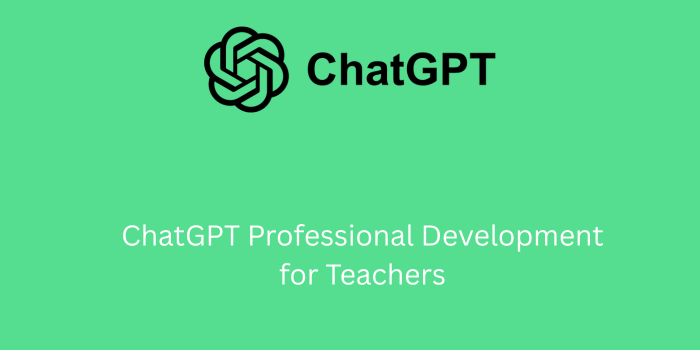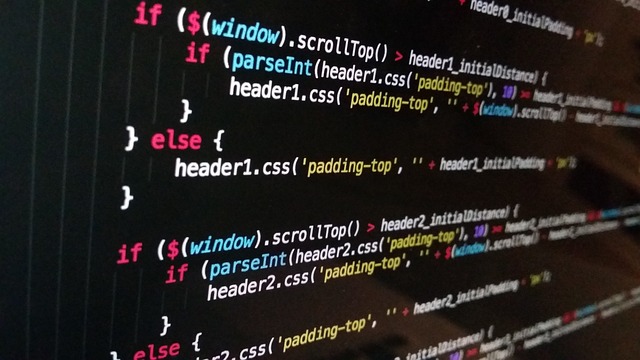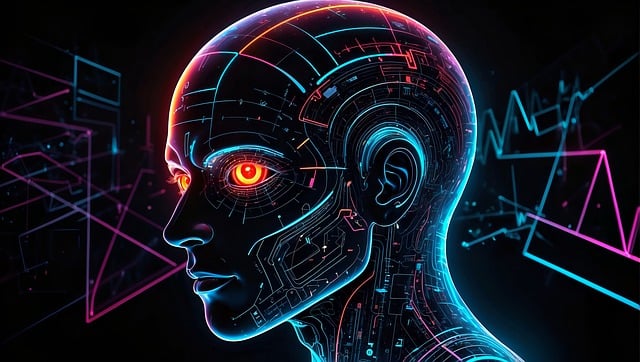Professional development is essential for educators to stay current with evolving pedagogy, technology, and student needs. In the era of digital transformation, AI—particularly ChatGPT—offers innovative tools to streamline workflows, support lesson planning, and personalize learning. Teachers need targeted training to understand how to use ChatGPT effectively, ethically, and creatively in their classrooms.
Why AI-Focused Professional Development Matters
AI tools like ChatGPT can significantly boost teaching efficiency and student engagement, but only when used effectively. Teachers unfamiliar with these tools risk falling behind or misusing AI in ways that don’t benefit learners. AI-focused PD helps educators:
- Understand the potential and limits of ChatGPT in education.
- Stay informed on AI ethics, data privacy, and responsible use.
- Develop strategies for blended learning and content generation.
- Increase digital literacy among teaching staff.
Benefits of ChatGPT for Teachers
When educators receive proper training in using ChatGPT, it transforms into an effective virtual assistant that enhances teaching efficiency, creativity, and time management. ChatGPT offers powerful support across daily teaching tasks, enabling educators to focus more on student interaction and less on repetitive or administrative work. From personalized lesson planning to streamlined feedback, the AI tool adds tremendous value to classroom operations.
Here are some of the most impactful benefits of using ChatGPT in teaching:
- Lesson Planning: Teachers can instantly generate structured lesson plans, creative activity ideas, and differentiated content tailored to diverse learning levels and curriculum standards.
- Assessment Creation: ChatGPT can assist in creating high-quality quizzes, assignments, rubrics, and other assessments within minutes—saving valuable preparation time.
- Feedback Support: Drafting detailed, personalized feedback and report card comments becomes faster and more consistent with AI support, ensuring all students receive thoughtful input.
- Administrative Assistance: From writing parent communications and professional emails to organizing meeting notes and schedules, ChatGPT reduces the burden of paperwork and helps teachers stay organized.
With the right professional development, ChatGPT empowers teachers to be more effective, creative, and responsive in today’s AI-enhanced classrooms.
Designing ChatGPT PD Programs
Designing an effective professional development (PD) program for ChatGPT begins with foundational knowledge. Teachers must first understand what ChatGPT is, how it works, and where it fits within the educational technology landscape. Introductory sessions should cover natural language processing basics, example use cases in education, and common misconceptions. This foundation helps eliminate fear or skepticism while setting realistic expectations for AI integration in schools.
Next, training must be hands-on and context-specific. Workshops that simulate real classroom scenarios—such as generating differentiated assignments or streamlining administrative tasks—allow teachers to apply ChatGPT in meaningful ways. These sessions should include guided practice, prompt writing strategies, and opportunities to explore curriculum-specific applications. Interactive elements like live demonstrations, collaboration with peers, and use-case brainstorming make learning more engaging and practical.
Finally, strong ChatGPT PD programs include ongoing support. Follow-up sessions, coaching, and shared digital resource libraries ensure long-term success and continuous growth. Schools may also appoint “AI champions”—educators trained to assist peers and lead AI initiatives. This kind of structured, collaborative training helps educators build confidence, stay updated on best practices, and foster a culture of innovation that encourages the ethical and creative use of AI tools in education.
Practical Uses of ChatGPT in Teaching
With the right training, teachers can use ChatGPT to enhance many areas of their daily work. Practical use cases include:
- Generating lesson ideas based on curriculum standards.
- Creating scaffolded learning materials for different student levels.
- Simulating student questions and drafting sample answers.
- Developing interactive classroom activities or games.
Recommended Tools and Training Platforms
To ensure teachers are well-prepared to integrate ChatGPT into their classrooms, choosing the right tools and training platforms is essential. These platforms provide structured guidance, hands-on practice, and expert insights into using AI effectively in education. Whether it’s learning how to write effective prompts or understanding ethical considerations, these resources help educators build confidence and competence.
Many educators begin with OpenAI’s own ChatGPT platform to explore its basic and premium features. Additionally, platforms like Teachable, Coursera, and Udemy offer professional development courses specifically focused on AI for educators. These courses often include practical examples, templates, and real-world classroom applications that help bridge the gap between theory and practice.
For schools and districts looking to implement ChatGPT training at scale, customized internal PD programs or partnerships with EdTech providers are valuable. These solutions ensure alignment with institutional goals while fostering a collaborative, future-ready teaching environment.
Case Studies: Successful ChatGPT PD
Across the United States, many school districts are successfully integrating ChatGPT into teacher professional development programs. These case studies highlight the real-world impact of structured AI training in education.
In Houston ISD, over 1,000 educators participated in workshops focused on ChatGPT prompt engineering, lesson planning, and ethical AI use. As a result, teachers reported a 40% improvement in lesson delivery efficiency.
Seattle Public Schools implemented ChatGPT for creating individualized learning plans. Teachers used the tool to differentiate instruction and streamline communication, leading to a notable boost in student engagement and satisfaction.
Independent schools across California adopted ChatGPT to support administrative tasks like drafting newsletters and progress reports. This freed up teachers’ time, allowing them to concentrate more on student interaction.
These case studies demonstrate that with targeted training, ChatGPT can significantly enhance teaching strategies, boost productivity, and support both students and educators in a modern learning environment.
Common Challenges and How to Overcome Them
While many educators are excited about integrating AI, some may resist due to unfamiliarity or fear that AI might replace human roles in education. Professional development (PD) programs play a crucial role in addressing these concerns and ensuring teachers feel supported throughout the transition to AI-enhanced teaching.
Effective PD strategies to overcome these challenges include:
- Ongoing support: Provide regular check-ins, updated resources, and help desks to assist teachers as they explore ChatGPT.
- Community building: Encourage collaboration and mentorship by creating teacher networks that share experiences and best practices.
- Clear goals: Emphasize that AI tools like ChatGPT are designed to assist—not replace—teachers in improving student outcomes.
By addressing fears proactively, schools can build confidence and foster a culture of innovation in education.
The Future of PD with AI in Education
As artificial intelligence continues to evolve, professional development (PD) must keep pace. Future training will move beyond basic AI tools to focus on advanced classroom integration, prompt engineering, and responsible AI use.
AI-powered PD platforms may soon offer personalized learning paths for teachers, adjusting content based on their teaching subjects, grade levels, and familiarity with technology. This will make training more relevant and engaging.
Ultimately, ongoing AI-focused PD will help educators stay ahead of the curve. Teachers who embrace AI tools like ChatGPT will be better equipped to create dynamic, student-centered learning environments.
Conclusion
ChatGPT offers enormous potential to enhance teacher productivity and student learning. By investing in professional development, schools can empower educators to use AI effectively, ethically, and creatively. The future of education isn’t just digital—it’s intelligently human-AI collaboration.






